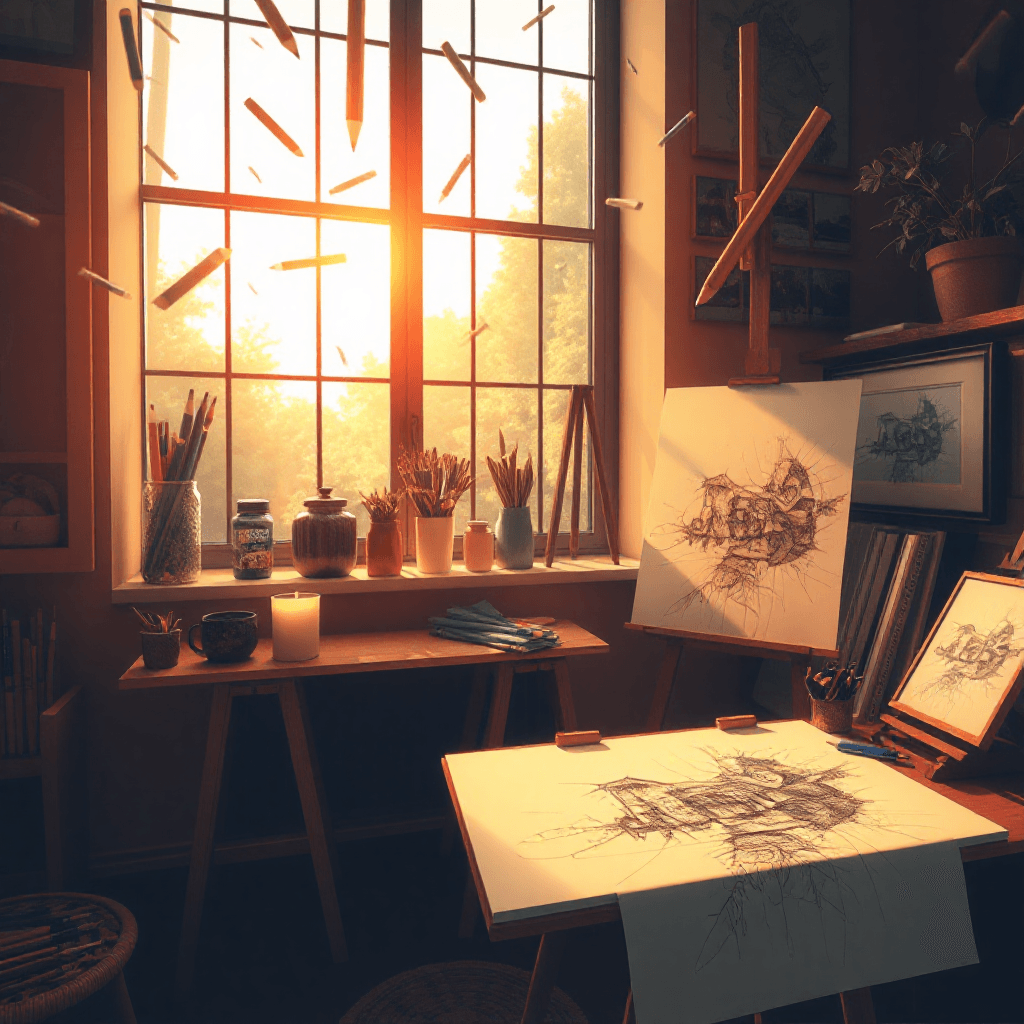Drawing Techniques: From Basic to Advanced (2025)
Table of Contents
Mastering drawing techniques is fundamental to artistic development. At Muzart Schools’ art classes in Toronto, we guide students through a comprehensive range of drawing methods in both our private art lessons and portfolio preparation programs. Whether you’re a beginner or preparing for art school, understanding these techniques will enhance your artistic journey.
Fundamental Drawing Techniques
Every artist needs to master these basic techniques as they form the foundation for more advanced skills:
Line Quality Control
The basics of line work include:
- Pressure variation
- Line weight changes
- Continuous line drawing
- Gestural lines
- Contour drawing
- Cross-contour techniques
Basic Shapes and Forms
Understanding geometric foundations:
- Spheres, cubes, and cylinders
- Organic shapes
- Positive and negative space
- Form construction
- Perspective basics
Essential Drawing Materials and Their Uses
Different materials create different effects:
Graphite Pencils
- H grades for light work
- B grades for darker values
- Techniques for each hardness
Charcoal
- Vine charcoal for sketching
- Compressed charcoal for dark values
- Charcoal pencils for detail
Other Drawing Tools
- Pen and ink techniques
- Markers and felt tips
- Digital drawing tools
Advanced Drawing Techniques
As students progress, we introduce more sophisticated methods:
Value and Shading
Master the art of creating depth:
- Hatching and cross-hatching
- Stippling
- Blending techniques
- Tonal gradation
- Creating texture through value
Perspective Drawing
Understanding spatial relationships:
- One-point perspective
- Two-point perspective
- Three-point perspective
- Atmospheric perspective
- Foreshortening
Specialized Drawing Applications
Different subjects require specific approaches:
Figure Drawing
- Gesture drawing
- Anatomical studies
- Portrait techniques
- Dynamic poses
- Drapery studies
Still Life
- Composition principles
- Light and shadow
- Texture rendering
- Material properties
- Spatial relationships
Landscape Drawing
- Natural forms
- Environmental perspective
- Texture techniques
- Atmospheric effects
- Light and weather
FAQ: Common Questions About Drawing Techniques
How long does it take to learn basic drawing skills?
With regular practice and instruction, most students see significant improvement in 2-3 months. Our structured programs starting at $155 monthly provide comprehensive drawing instruction.
Do I need expensive materials to start learning?
No, we provide all necessary materials in our classes. Our trial lessons ($35) introduce students to various professional-grade drawing tools.
Can anyone learn to draw, or is it just natural talent?
Drawing is a skill that can be taught and developed through proper instruction and practice. Natural talent helps, but technique and practice are more important.
How often should I practice drawing?
Daily practice is ideal, even if just for 15-30 minutes. Regular, consistent practice leads to better skill development.
Ready to Begin Your Drawing Journey?
Don’t wait to start developing your drawing skills! Our experienced instructors are ready to guide you through every technique and principle.
Special Offer: Book Your Trial Lesson Today
- ✓ $35 for a full trial lesson
- ✓ All materials included
- ✓ Meet our professional instructors
- ✓ Tour our state-of-the-art facility
- ✓ Discuss your artistic goals
Monthly programs starting at $155 include comprehensive drawing instruction in a supportive environment. Join our thriving artistic community today!
Visit Our Studio
Our well-equipped facility at 225 The East Mall Unit 11, Etobicoke, provides the perfect environment for developing your drawing skills with professional guidance.
Hours of Operation:
- Monday to Friday: 3:30 PM – 9 PM
- Saturday: 10 AM – 4 PM
- Sunday: Closed
Contact Us
Have questions about our drawing programs? We’re here to help!
- Phone: (416) 236-2221
- Email: info@muzartschools.com

